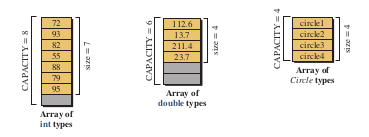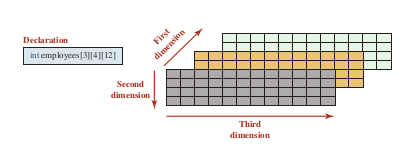- Lectures
- Online tutorials
- Practical(s)
- Assignment(s)
- Presentation(s)
C
C++
GIS scripting and applications (Python, R)
Data processing, analysis, and modeling (Python, R)
Web mapping (JavaScript, Python)
Geospatial databases (SQL, NoSQL)
Map Servers (Java, C#, .NET, C++)
GIS heavy-weight development (Java, C/C++, C#)
Mobile development (Android, iOS, JavaScript)
Geospatial libraries (JavaScript, Python, Java, R, C/C++)
The 3 cornerstones of Object Oriented Programming (OOP);
An array is a compound type that defines a sequence of data items of the same type
Array Attributes
TypeCapacitySize
Array declaration/definition gives an array a name, sets the type of the elements, sets the capacity of the array, and allocates memory locations for the array



The array elements are referenced using zero indexing
The index starts from [0] and goes to [CAPACITY - 1]

To store and retrieve an element of an array

A two-dimensional array defines a structured data type in which two indices are used to define the location of elements in rows and columns
The 1st index defines the row; the 2nd index defines the column
int scores [5][3] = {{82,65,72},{73,70,80},{91,76,40},{72,72,68},{65,90,80}};

C++ supports three dimension arrays
But, arrays with more than three dimensions are rare

Queries about this Lesson, please send them to:
*References*
- C++ Programming - An Object-Oriented Approach, 2019
Behrouz, Richard et.al- Accelerated C++ - Practical Programming by Example, 2000
Andrew, Barbara et.al
Courtesy of …